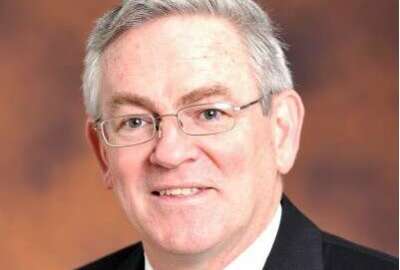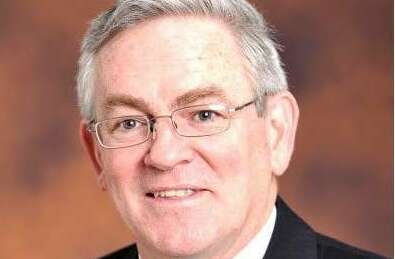
NNSA leader traveling to all sites to get situation report
There are 50,000 people working in the Energy Department's nuclear security enterprise and for obvious reasons, most of them haven't had the option of teleworking...
Best listening experience is on Chrome, Firefox or Safari. Subscribe to Federal Drive’s daily audio interviews on Apple Podcasts or PodcastOne.
There are 50,000 people working in the Energy Department’s nuclear security enterprise and for obvious reasons, most of them haven’t had the option of teleworking during the pandemic. To get a first hand look at how that workforce has been managing to continue to meet its missions, the National Nuclear Security Administration’s top official has spent the last couple of months touring all eight sites. That tour wraps up this week. Lisa Gordon-Hagerty, the NNSA administrator, joined Federal News Network’s Jared Serbu on Federal Drive with Tom Temin to talk about what she’s seen so far.
Interview transcript:
Lisa Gordon-Hagerty: The National Nuclear Security Administration, of course, works in partnership with the Department of Defense to maintain our US nuclear deterrent. So it was imperative for me to witness firsthand, following health and safety guidelines, the great contributions that NNSA has made throughout the COVID pandemic. As I found, I like to fondly note that, despite COVID, the NNSA enterprise still needed to conduct our operations. And I’m very heartened to note that the NNSA did not miss any major deliverables or any milestones throughout the COVID pandemic. We made all of our deliveries to the Navy into the Air Force. Most recently, I went out to STRATCOM, to visit with the STRATCOM commander, to discuss the progress that we’ve been making our modernization programs, as well as of course, conducting tours throughout our entire enterprise. We are made up of eight national laboratories, plants and sites. Next Tuesday, I will be visiting the eighth of our sites, which is the Kansas City National Security Campus. So it was very important for me to get out to the workforce, and also – important for me personally, to ensure our workforce understands how grateful we are, throughout our entire enterprise in our nation is for their contributions to our national security missions, despite the pandemic. NNSA is made up of 50,000 great men and women, and most of whom worked through the COVID pandemic. Obviously, many of our operations have to be conducted in classified space, that work cannot be done via telework. But to the greatest extent possible, we did maximize telework throughout the pandemic where appropriate.
Jared Serbu: Obviously, great news that none of the important schedules slipped to the right at all. And I’m sure the answer this question depends a lot on which place you’re talking about but what were some of the most significant adaptations that the workforce had to make to keep operating during the pandemic?
Lisa Gordon-Hagerty: Well, across our enterprise, which ranges from California to Washington, D.C., we took into account every single health and safety measure that impacted us from a local level. So coupled with that, and the major direction that was given to us by our federal government, we applied local health and safety practices, so that we ensure that our workforce continued to remain safe, healthy, and we could also execute our missions. So what we have done is we’ve taken into account all of our eight locations, and how we could apply the best health and safety measures and practices both from a local perspective as well as from a national perspective.
Jared Serbu: Was there anything that the pandemic specifically caused in terms of things that the NNSA needed to do or the workforce at these individual sites needed to do other than just adapting to continue to do business as usual, to the greatest extent possible?
Lisa Gordon-Hagerty: Well, I think NNSA’s enterprise that we did not miss any deliverables or any major milestones throughout the past six months is a testament to our workforce. But we had to continuously adapt. We are a resilient enterprise, despite the age of our facilities in the complex itself. Nonetheless, what we also did was we shared best practices and lessons learned throughout our entire enterprise. So we are truly an integrated organization. And so from California, to Tennessee, we have constantly shared best practices. We also prioritized internally what missions had to continue to be conducted. So we actually prioritized all of the mission needs, whether it was in defense nuclear non-proliferation, or maintenance of the nuclear weapons stockpile, or Naval reactors portfolio. So we continuously do that – make improvements, share best practices across our entire enterprise. And also of note, we’ve been working very closely with our DoD counterparts doing the same.
Jared Serbu: Are there any of those best practices that you can share with us without getting into classified territory?
Lisa Gordon-Hagerty: No, not at all. I’d be happy to. Some of the best practices that we applied were how we would manage groups rather than working a normal eight-hour shift, if you will, a normal business day. What we also did, we had challenges where we actually put groups of people on shift work, so that they would never overlap. So in In case we did have a positive COVID in a team of the workforce, we would be able to isolate them, but continue to operate throughout the pandemic. And we shared how we did that. Now those distributed teams were a challenge to us. But I will tell you, the workforce was all in on every single one of these efforts. And they knew that from day one, their health and safety was our number one priority and continues to be our number one priority. So we’ve done everything we can, we’re up to the challenge. And I think we have been able to execute all of our missions, practically flawlessly.
Jared Serbu: And especially considering that that so many of these missions do require in-person attendance at work sites, overall, how has NNSA done at keeping infection rates down to a minimum?
Lisa Gordon-Hagerty: Our infection rates actually are at a minimum level. I think, again, it’s a tribute to the workforce that every individual in our workforce understands the implications that if they are COVID-positive, or they have been exposed to somebody who is potentially COVID-positive, it’s their responsibility to make sure that they stay away from our work environment. And I will tell you that we have seen that absolutely top to bottom and every one of our organizations, as well as here at headquarters in Washington, D.C., everyone knows the critical missions that we must execute. And so they’ve been very attentive to the needs of the health and safety of not only themselves and their families, but of course, our entire workforce.
Jared Serbu: And just to wrap up where we started on the topic of the tour itself, did you learn anything in particular, or were there any surprises or takeaways or memorable encounters that you had?
Lisa Gordon-Hagerty: I had a couple of memorable encounters actually. First of all, it was really important for me again, to reiterate that I needed to witness firsthand and I wanted to witness firsthand the resiliency of our enterprise. I have now a vibrant collection of face coverings. I wear them very proudly because they represent all of our labs, plants and sites. A couple of the notable ones would be the Los Alamos and the personalized Lawrence Livermore National Laboratory mask, as well as one that’s very exciting, which is the boomer collection. These are miners that contribute to national security at the Nevada national security site, and they presented me with their own personalized mask. So it’s very exciting and it’s fun, and I wear them every opportunity I have to represent the fine men and women of the NNSA.
Jared Serbu: That’s Lisa Gordon-Hagerty, the administrator of the National Nuclear Security Administration. You can find this interview at FederalNewsNetwork.com/FederalDrive.
Copyright © 2025 Federal News Network. All rights reserved. This website is not intended for users located within the European Economic Area.
Tom Temin is host of the Federal Drive and has been providing insight on federal technology and management issues for more than 30 years.
Follow @tteminWFED





